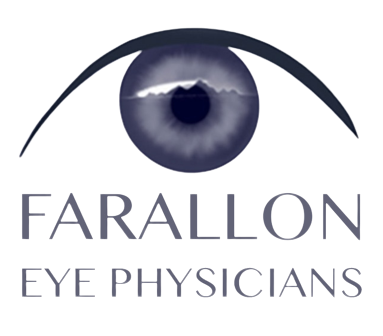Dry Eye
Dry Eye
Dry Eye
Dry eyes are a common condition. Dry eyes occur when your eyes do not produce enough tears to keep them moist. This may happen under certain circumstances, such as from side effects of some medications or being in a dry environment. Dry eyes may itch, burn, or sting. They can be relieved with frequent blinking, rest, or Artificial Tears, a type of eye drop.
Anatomy
Your eyelids cover and protect your eyes. Your eyelids keep your eye moist and clean each time you blink. Your eyelashes keep dirt and particles from touching your eye. The lacrimal glands produce fluid (tears) to keep your eyes moist and comfortable.
Causes
Dry eyes occur when you do not produce enough tears or your tears are not normal. Aging and cold or allergy medications commonly cause dry eyes. Sun exposure, smoke, dry air, air-conditioned rooms, and windy environments can contribute to dry eye. Certain medical conditions, eye injuries, or eyelid disorders can cause dry eyes. Often patients will say they are tearing a lot and will be told they have dry eyes. This is the most common complaint and is due to the tear film being abnormal and not wetting the eye. The lacrimal gland tries to compensate by producing more tears. Artificial Tears replace the missing part of the tear film. A tear duct in the lid may get blocked and cause tearing as the tears cannot leave the eye and instead flood over the lid like water over a dam. Blocked tear ducts can be caused by infection and need to be evaluated by your physician.
Symptoms
Dry eyes may cause your eyes to itch, burn, or sting. Your eyes may feel strained or tired after reading for only short periods. You may have excess tearing. Your contact lenses may feel uncomfortable. In very severe cases, eye surface abrasions may occur. However, dry eye most frequently only causes discomfort and not vision loss. In patients with a blocked tear duct, the duct can get infected causing redness, swelling, and tenderness over the infected area.
Diagnosis
You should call your doctor if your eyes do not respond to self-care treatments or if you experience eye discharge, pain, or lesions. You should call your doctor if you receive an eye injury or if joint pain, swelling, and stiffness accompany your symptoms. Your doctor will review your medical and optical history and perform a thorough eye examination. A simple tearing test may be used to help your doctor diagnose dry eyes. Additional tests may be performed to rule out other conditions.
Treatment
Self-care measures can relieve the symptoms of dry eyes. It may be helpful to blink your eyes more frequently and close your eyes often to rest them. It may be helpful to avoid smoke, dry air, direct wind, air conditioning, and prolonged sun exposure. A humidifier may help, especially in the winter months. Over-the-counter artificial tears or ointments may be used to add moisture to your eyes. Your doctor may also prescribe artificial tears. In patients with blocked tear ducts, the duct will be probed to see if it can be opened. Imaging can be done with a dye injected into the tear duct to see the blockage. In some cases, surgery is needed to create a new tear duct.
Complications
Severe dry eyes can lead to damage to the cornea which can cause significant visual impairment.
Advancements
For the patient with severe dry eyes, a drug called Cyclosporin is available. This drug is a member of the anti-inflammatory drugs and must be prescribed by a physician. It takes several months for this drug to be effective.
This information is intended for educational and informational purposes only. It should not be used in place of an individual consultation or examination or replace the advice of your health care professional and should not be relied upon to determine diagnosis or course of treatment.
The iHealthSpot patient education library was written collaboratively by the iHealthSpot editorial team which includes Senior Medical Authors Dr. Mary Car-Blanchard, OTD/OTR/L and Valerie K. Clark, and the following editorial advisors: Steve Meadows, MD, Ernie F. Soto, DDS, Ronald J. Glatzer, MD, Jonathan Rosenberg, MD, Christopher M. Nolte, MD, David Applebaum, MD, Jonathan M. Tarrash, MD, and Paula Soto, RN/BSN. This content complies with the HONcode standard for trustworthy health information. The library commenced development on September 1, 2005 with the latest update/addition on April 13th, 2016. For information on iHealthSpot’s other services including medical website design, visit www.iHealthSpot.com.
To schedule an appointment for optical, ophthalmology or cosmetic services in Daly City, California, simply call the office of Susan Longar, MD.



